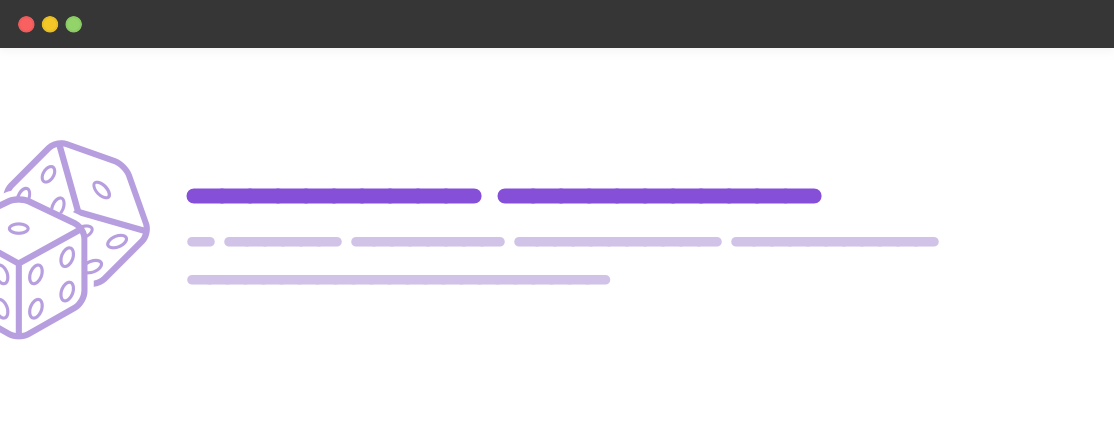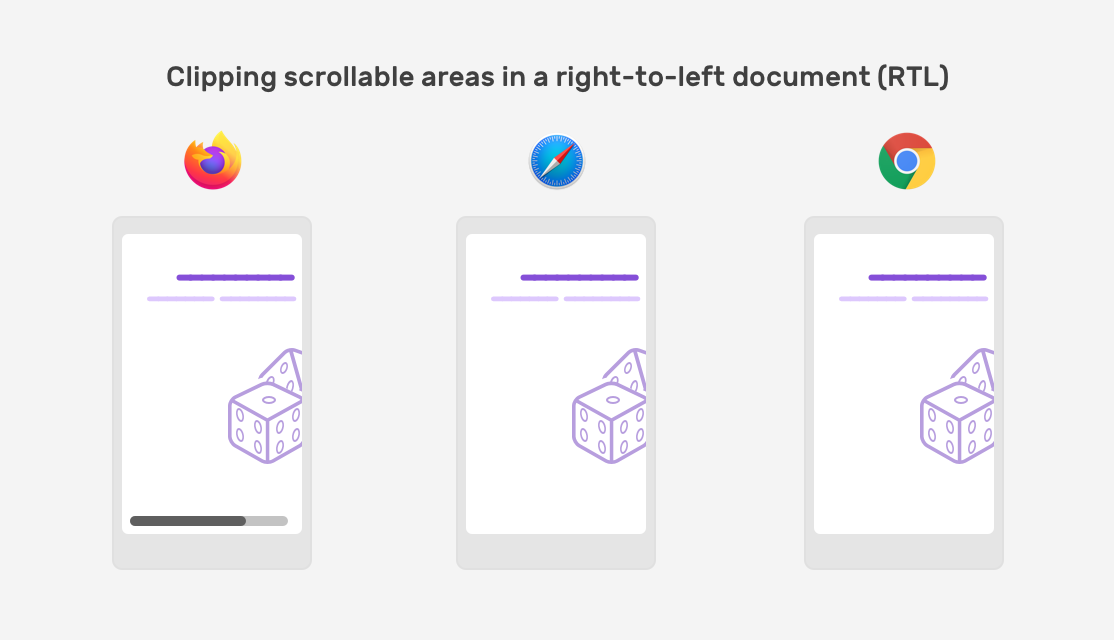This is the first of its kind blog post. I simply called it “You might not know”. For this one, I want to share something about the default behavior of clipping scrollable areas.
Say we have a section with a decorative pseudo-element (The document direction is LTR).

.section::before {
position: absolute;
left: -20px;
top: 5px;
width: 150px;
height: 75px;
background: url("img/dice.svg") center/cover no-repeat;
}Notice that the pseudo-element is positioned on the left side with a negative value. This isn’t causing any horizontal scrolling and you don’t need to apply overflow: hidden.
The designer has changed their mind and they want the decorative element to be on the right side, so you do the following.
.section::before {
/* You swapped left with right */
right: -20px;
}Boom! We have a horizontal scrollbar. Why did that happen when the pseudo-element was moved to the right side? Wasn’t it working fine before that?

Well, the reason is that because the browser user agent will clip the overflow area of the block-start and inline-start areas. In the first example, the pseudo-element was placed on the left side with a negative margin. This is considered the inline-start, so the browser clipped it for us.
According to the CSS spec:
UAs must clip the scrollable overflow area of scroll containers on the block-start and inline-start sides of the box (thereby behaving as if they had no scrollable overflow on that side).
Right to left documents (RTL)
For a document that starts from right to left (e.g: Arabic website), the inline-start of the document will be on the right side. That means, if a pseudo-element is placed with a negative value on the right side, the browser will clip the overflow for us.
If the root has dir="rtl", the inline-start will be on the right side.
<html dir="rtl"></html>What I found interesting is that Firefox shows a horizontal scrollbar even though the direction is RTL and the element is positioned on the right. Chrome and Safari are displaying the element as expected.

I will investigate more in the behavior of Firefox. For the time being, be careful when you position elements outside their parent as a scrollbar will appear. The solution now is to use overflow-x: hidden.
I wrote an ebook
I’m excited to let you know that I wrote an ebook about Debugging CSS.

If you’re interested, head over to debuggingcss.com for a free preview.
